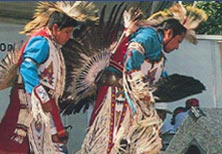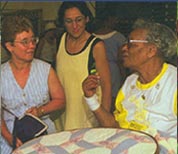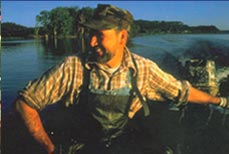






| Resources | ||||||
|
||||||
| Learning Guide |
| 1. Social Studies |
| 2. Language Arts |
| 3. Music |
| 4. Art |
| 5. Special: Multi-Disciplinary, Culminating Activities |
|
Like the needlework used as an example here, many of these material forms of expression are not only beautiful works of art, but also carry special meanings and serve as important symbols for the ethnic community. They tell a story about a shared heritage.
Folklife Background This lesson uses as an example a “story cloth,” pandau, embroidered by Shoua Her, a Hmong (Southeast Asian tribal group) woman who moved from Laos to Thailand to Oskaloosa with her family in the 1970s. The story cloth documents the persecution of the Hmong and their flight from Southeast Asia. The connection between narrative and material object is very strong in this example, but you should think of other objects in your community that hold similar significance: quilts, murals, carvings, etc. Shoua Her learned to do the embroidery and patchwork of Hmong needlework from her mother. She made this cloth with other needleworkers. As in other parts of the United States, in Iowa there are Hmong people who continue to practice their folk arts. Nowadays, much of their textile work is made for sale. |
Previous |
| | Next |
| Objectives | ||||||||
Students will be able to:
|
| Cross References |
Instructional Program: Where People Come From, Family Folklore |
| smithsonian institution |
 |
pioneer hi-bred international, inc. |
iowa sesquicentennial commission |
 |
iowa arts council |
